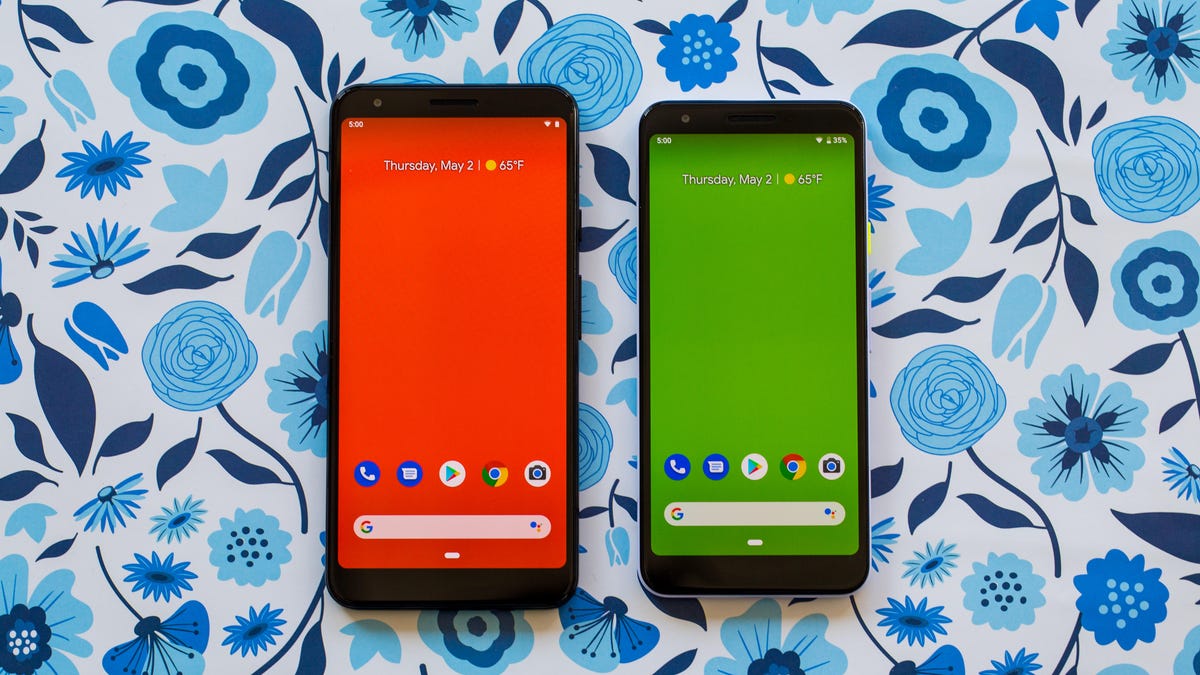Google Pixel 3A at $399 is a response to crazy-expensive phones
Sick of paying through the nose for a phone? Google’s latest is half the price of a Pixel 3.

Google announced the new devices on Tuesday.
Google hopes a more wallet-friendly price tag will have you looking at its Pixel family again. The search giant on Tuesday unveiled the Pixel 3A, a mid-tier version of its flagship Pixel 3 phone released in October. The biggest difference between the two phones: about $400.
The 3A costs roughly half as much as its predecessor, starting at $399 for a 5.6-inch model and $479 for a larger, 6-inch Pixel 3A XL model. The original Pixel 3 , which was meant to rival Apple's iPhones and Samsung's Galaxy phones , costs $799 for the standard size and $899 for a larger version, dubbed the XL.
The new phones, which Google rolled out at its annual I/O developer conference, are almost identical to the more expensive models aside from a few concessions. The newer phones aren't water-resistant, lack wireless charging and feature a less powerful front-facing camera.
The 3A also includes a retro feature that was done away with on the more expensive phones: a 3.5mm jack for headphones. Many premium phones, like the Pixel 3, have ditched the jack in favor of wireless Bluetooth connections.
The cheaper phones come as the broader smartphone market shows signs of fatigue -- particularly as the prices for the phones creep higher and consumers start to think twice about annual or even bi-annual upgrades. Last week, Google CFO Ruth Porat said on an earnings call that Pixel sales had dropped because of "recent pressures in the premium smartphone market." Apple and Samsung -- two leaders in high-end phones -- each reported weaker smartphone sales.
In an interview ahead of I/O, Mario Queiroz, who leads development of Pixel phones, said the 3A was designed to address key problem. He also hinted that it was just the start of a line of more affordable Pixel phones, which addresses the shifting consumer patterns.
"People are keeping their phones longer," Queiroz said. "Prices have just gotten too high for a lot of consumers."
Quieroz says Google began developing the 3A about 18 months ago as the market trends became clearer. When asked what the "A" stands for, he joked that it's for "awesome."
Perhaps coincidentally, Samsung's more affordable midtier line of phones falls under the Galaxy A name.
Google remains committed to the premium market, Queiroz says, and it's expanding the retail availability of all of its Pixel phones. My colleague Jessica Dolcourt has argued that limited availability -- the Pixels could only be bought at Verizon stores or online at Google, even though they work on all US networks -- is one reason for the lower sales.
Now they'll be available at T-Mobile, Sprint and US Cellular locations. Queiroz says Google is still negotiating with AT&T.
Since people are keeping their phones longer, it's worth asking if Google will change up how often it releases new phones. Queiroz said the company will still regularly debut new models, but he stopped short of committing to a new Pixel phone at least every year, which is the current schedule.
He also said the company is experimenting with new kinds of devices, like a foldable Pixel, similar to Samsung's new Galaxy Fold. The company is only at the prototype stage, he said, adding that foldable phones aren't must-have devices yet.
Given what's happened with early units of the Galaxy Fold , Google is likely smart to hold off on releasing a product.
Google unveiled the original Pixel phone, its first branded smartphone, in 2016. Before the Pixel, Google had worked with handset makers including HTC and LG to manufacture a line of Nexus phones that ran a "stock" version of Android that was free of bloatware, a derisive term for software that carriers and device makers force onto the phones. A year after Pixel's debut, Google shelled out $1 billion in a deal with HTC to hire thousands of its engineers to work on Pixel and other Google hardware devices.
Despite Google's efforts, getting people to choose Pixel may prove challenging because consumers are set in their ways. Around the world, people turn to Samsung, Huawei and Apple when they purchase smartphones, according to a study by IDC, a market researcher.
Google is clear-eyed about that competition.
"We want to get as many Pixel users as we can, premium phones or otherwise," Queiroz said. "We're definitely a challenger brand with a challenger product."
Google I/O 2019
Originally published at 11:23 a.m. PT.
Update, 1:39 p.m. PT: To include additional background.

